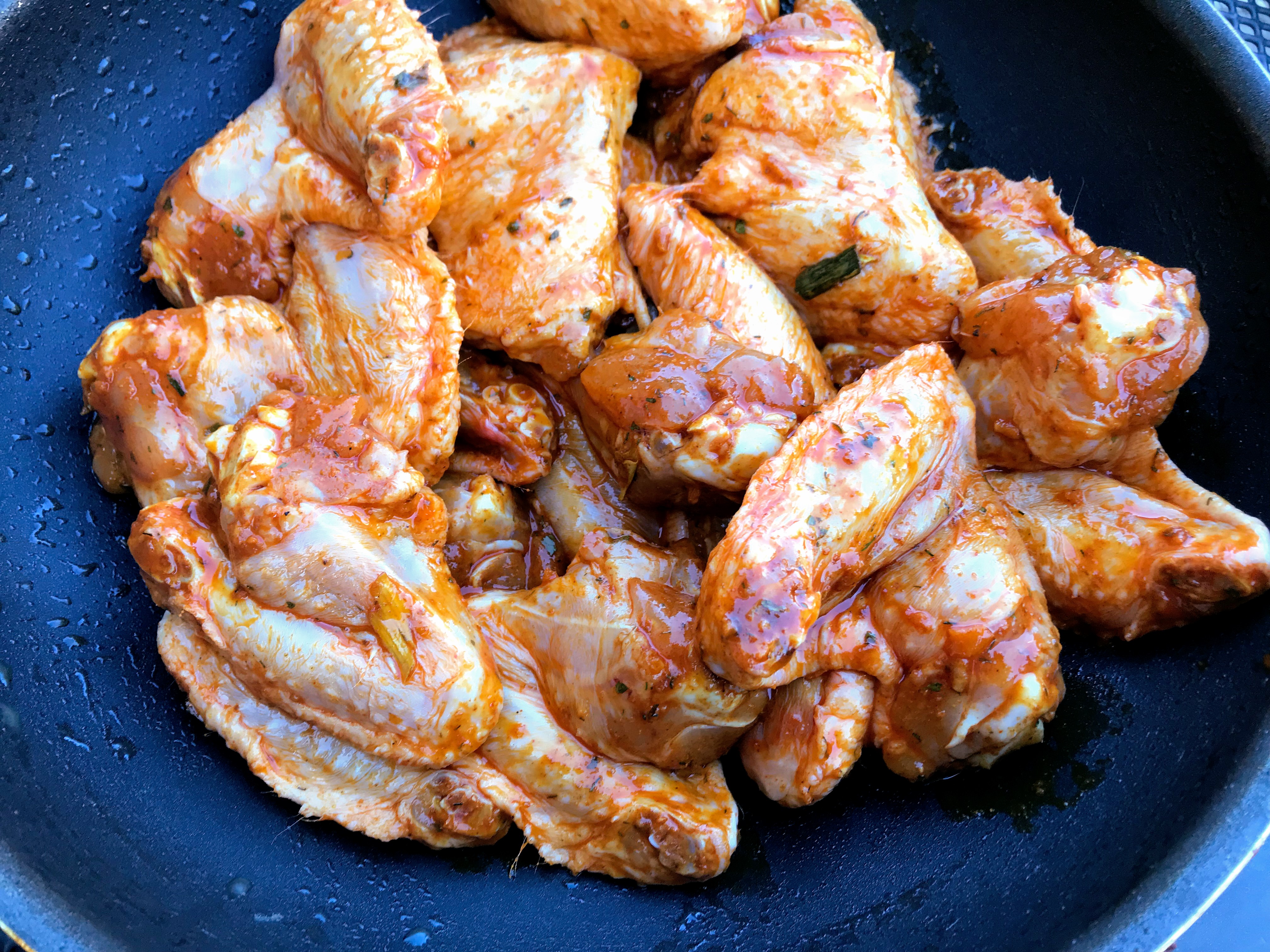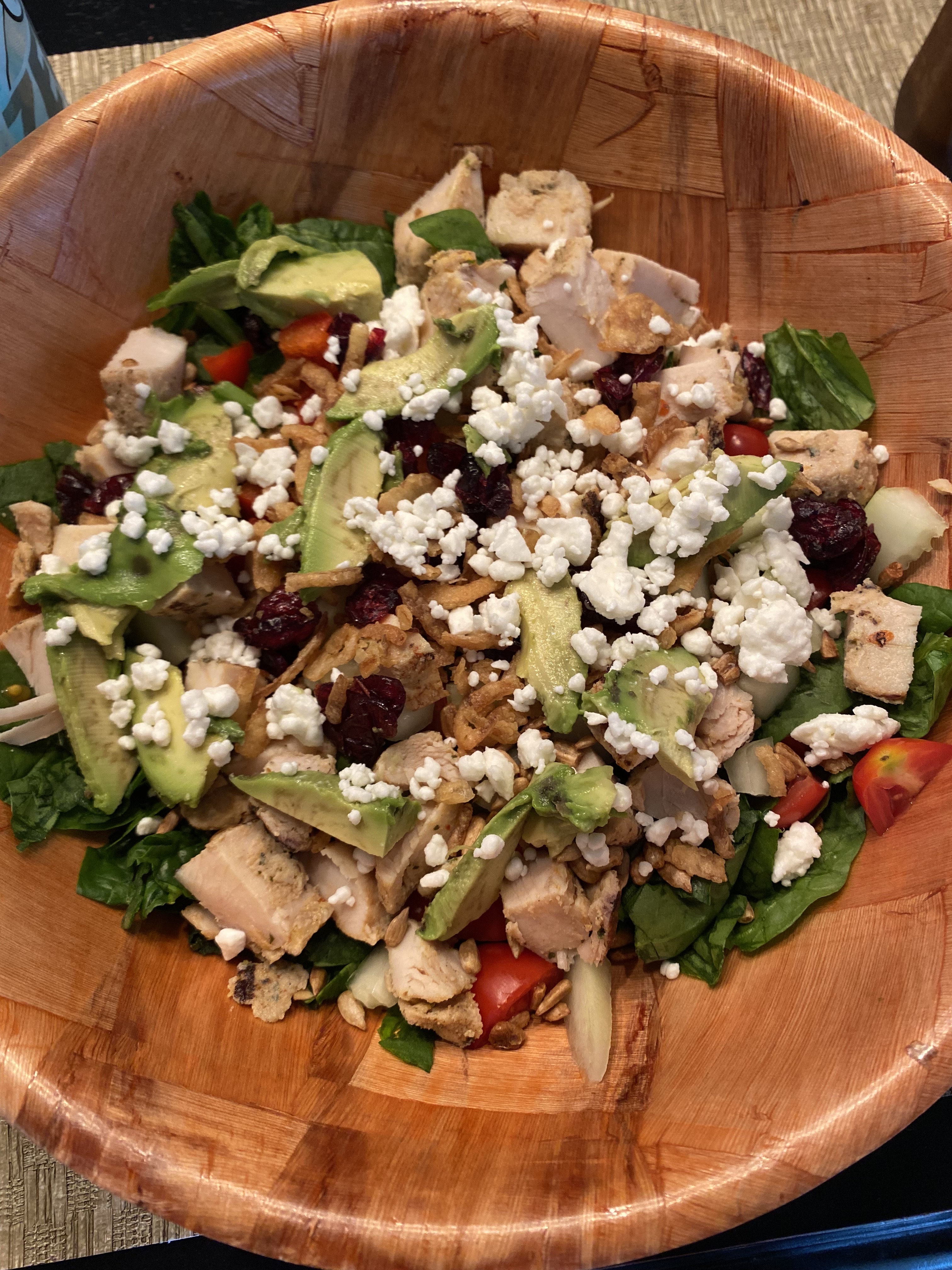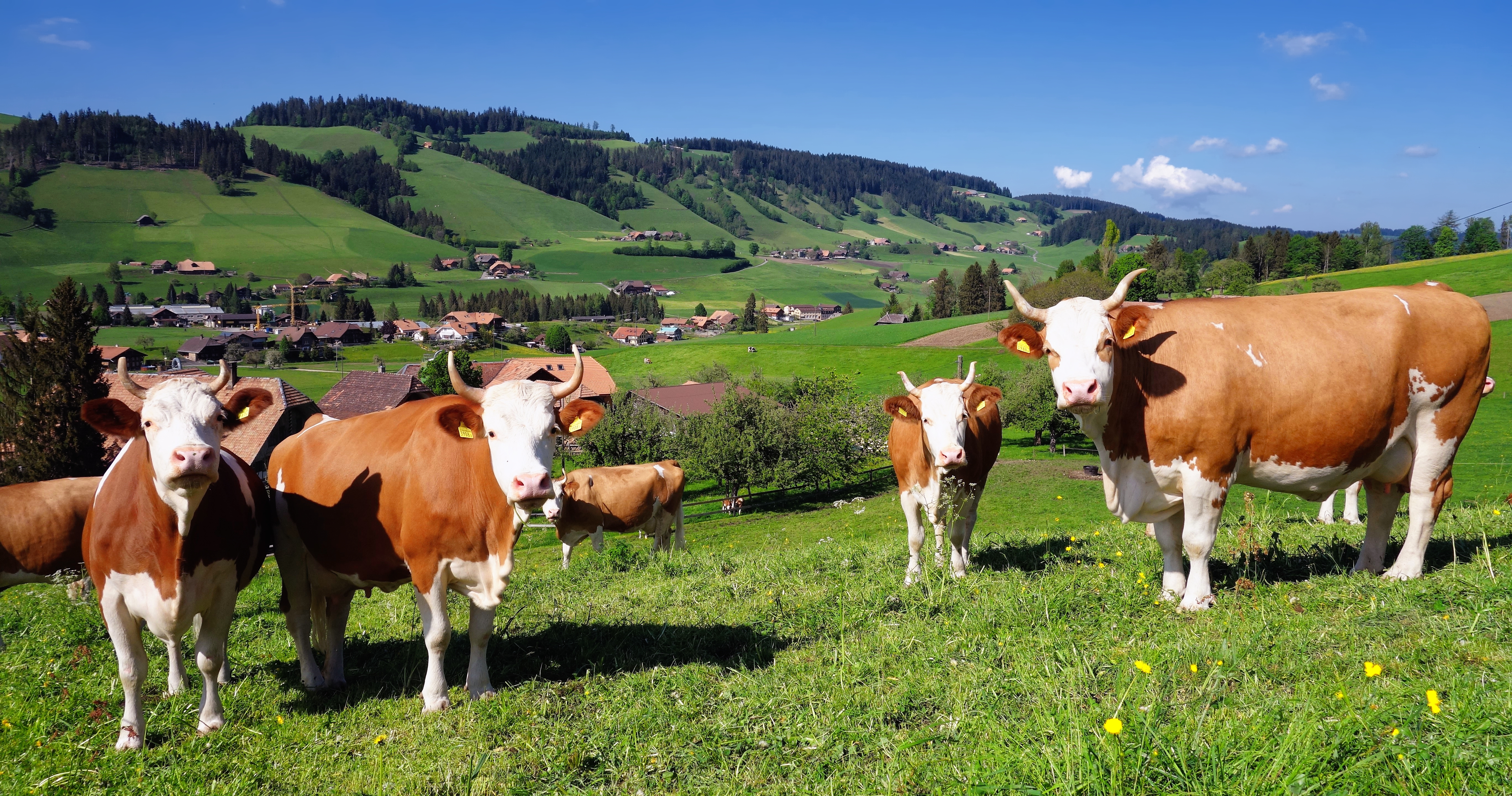|
Wurstsalat
Wurstsalat (, literally ''sausage salad'') is a tart sausage salad prepared with distilled white vinegar, Cooking oil, oil and onions. A variation of the recipe adds strips of pickled Pickled cucumber, gherkin. It is generally made from boiled sausage like Bologna sausage, Lyoner, stadtwurst, Regensburger Wurst or extrawurst. It is a traditional snack in Southern Germany, Alsace, Switzerland and Austria (where it is known as , lit. "sour sausage"). In the Czech Republic, similar snack is served in full, not cut to slices, and is known as “the drowning man”, “utopenec” in Czech. To prepare the dish, the sausage is cut into thin slices or strips and placed, along with raw onion (sliced into rings or diced), in a vinegar and oil marinade, lightly seasoned with salt, pepper, and sometimes paprika. Common additional ingredients are finely cut gherkins, radishes, parsley or chives. Wurstsalat is generally served with bread and sometimes fried potatoes. Popular variants are the ... [...More Info...] [...Related Items...] OR: [Wikipedia] [Google] [Baidu] |
List Of Sausage Dishes ...
This is a list of notable sausage dishes, in which sausage is used as a primary ingredient or as a significant component of a dish. Sausage dishes * * * * * * * * * * * * * * * * * * * * * * * * * * * * * * Kuumakoira - Kind of hot dog * * * * * * * * * * * * * * * * * * * * * * * * * See also * List of hot dogs * List of sausages * List of pork dishes * List of smoked foods * List of bacon dishes References {{Meat * Sausage A sausage is a type of meat product usually made from ground meat—often pork, beef, or poultry—along with salt, spices and other flavourings. Other ingredients, such as grains or breadcrumbs, may be included as fillers or extenders. ... [...More Info...] [...Related Items...] OR: [Wikipedia] [Google] [Baidu] |
Swabian Cuisine
Swabian cuisine is native to Swabia, a region in southwestern Germany comprising great parts of Württemberg and the Swabia (Bavaria), Bavarian part of Swabia. Swabian cuisine has a reputation for being rustic, but rich and hearty. Fresh egg pastas (e.g., Spätzle noodles or Maultaschen dumpling wrappers), soups, and sausages are among Swabia's best-known types of dishes, and Swabian cuisine tends to require broths or sauces; dishes are rarely "dry". History As soils were meagre and stony, conditions for raising cattle were poor. Meat, therefore, was something of a luxury for most, and was mainly consumed by the German_nobility, aristocracy and Feudalism, landowners, while the Peasant, common people often had to be content with tripe where meat was concerned. Regional influences on Swabian cookery abound. Old-Wurttemberg was Pietism, pietistic, and the cuisine is therefore rather simple, as nutrition was prized above flavour, in keeping with Christian asceticism. In the Roman Ca ... [...More Info...] [...Related Items...] OR: [Wikipedia] [Google] [Baidu] |
Regensburger Wurst
Regensburger Wurst is a boiled sausage with a fine or coarse pork filling. It comes in a compact shape with a length of about 10 cm (4 in) and a diameter of about 4 cm. It was invented in Regensburg, Germany in the second half of the 19th century and only sausages that are produced in the inner city ring may be called "Regensburger". The local name for the sausages is "Knacker", which can be translated as "cracker" or "crackler". Characteristics The sausage is prepared using pork without fat which is finely ground and mixed with salt and spices as well as some dices of pork. The sausage filling is put into sausage casing made from beef intestines, bound into short sausages, smoked and then boiled. The ''Regensburger Würste'' can be eaten either hot or cold and are also the main ingredient for the ''Regensburger Wurstsalat'' that is made with a marinade of oil, vinegar, chopped onions and mustard. Another popular serving is the ''Regensburger Semmel'' which featu ... [...More Info...] [...Related Items...] OR: [Wikipedia] [Google] [Baidu] |
Extrawurst
Extrawurst () can be either a type of cold cut or part of a German idiomatic expression. Sausage type Extrawurst is a type of Austrian cold cut made from a well-spiced mixture of beef, pork and bacon fat. In Austria, it is the most popular type of cold cut. It is similar to the American Bologna sausage, the Dutch , the German ''Lyoner'' or ''Fleischwurst'' and the Swedish '' Falukorv''. It is cooked or served cold, often in a Wurstsalat, or as a cold cut. One variety is the ''Pikantwurst'', which has finely chopped red or green peppers added to it. Another type of Extrawurst called ''Gurkerlextra'' containing small chunks of pickled cucumber is also available. German idiomatic expression Extrawurst is also a frequently used German German(s) may refer to: * Germany, the country of the Germans and German things **Germania (Roman era) * Germans, citizens of Germany, people of German ancestry, or native speakers of the German language ** For citizenship in Germany, see ... [...More Info...] [...Related Items...] OR: [Wikipedia] [Google] [Baidu] |
Cervelat
Cervelat, also cervelas, servelat or zervelat, is a sausage produced in Switzerland, France (especially Alsace and Lyon), Belgium, the Netherlands and parts of Germany. The recipe and preparation of the sausage vary regionally. The sausages are spelled ''cervelas'' in the French-speaking part of Switzerland, ''Cervelat'' in the German-speaking part, and ''servelat'' in the Italian-speaking part. The terms ultimately derive from ''cerebrum'', the Latin word for brain, which was used in early recipes. The term "Cervelat" is the oldest of the three. It was first recorded in 1552 by Rabelais, and is derived from ''zervelada'', a Milanese word meaning a "large, short sausage filled with meat and pork brains." Modern recipes do not include brains, and arose towards the end of the 19th century in Basel, as a reworking of the traditional recipe. In Germany, the sausage is sometimes also called "Lyoner" which comes from its perceived origin. In the federal state of Saarland the "Lyon ... [...More Info...] [...Related Items...] OR: [Wikipedia] [Google] [Baidu] |
Marinade
Marinating is the process of soaking foods in a seasoned, often acidic, liquid before cooking. This sauce, called the marinade, can be either acidic (made with ingredients such as vinegar, lemon juice, or wine), or enzymatic (made with ingredients such as pineapple, papaya, yogurt, or ginger), or have a neutral pH. In addition to these ingredients, a marinade often contains oil, salt, herbs, and spices to further flavor the food items. It is commonly used to flavor foods and to tenderize tougher cuts of meat; the process may last seconds or days. Marinating is similar to brining, except that brining relies on the action of salty brine rather than the action of acids or enzymes. Marinating is also similar to pickling, except that pickling is generally done for much longer periods of months or even years, primarily as a means of food preservation. Conversely, marinating is usually performed for a few hours to a day, generally as a means of enhancing the flavor of the food or ten ... [...More Info...] [...Related Items...] OR: [Wikipedia] [Google] [Baidu] |
German Meat Dishes
German(s) may refer to: * Germany, the country of the Germans and German things **Germania (Roman era) * Germans, citizens of Germany, people of German ancestry, or native speakers of the German language ** For citizenship in Germany, see also German nationality law **Germanic peoples (Roman era) *German diaspora * German language * German cuisine, traditional foods of Germany People * German (given name) * German (surname) * Germán, a Spanish name Places * German (parish), Isle of Man * German, Albania, or Gërmej * German, Bulgaria * German, Iran * German, North Macedonia * German, New York, U.S. * Agios Germanos, Greece Other uses * German (mythology), a South Slavic mythological being * Germans (band), a Canadian rock band * "German" (song), a 2019 song by No Money Enterprise * ''The German'', a 2008 short film * "The Germans", an episode of ''Fawlty Towers'' * ''The German'', a nickname for Congolese rebel André Kisase Ngandu See also * Germanic (disambiguatio ... [...More Info...] [...Related Items...] OR: [Wikipedia] [Google] [Baidu] |
Salads
A salad is a Dish (food), dish consisting of mixed ingredients, frequently vegetables. They are typically served chilled or at room temperature, though some can be served warm. Condiments called ''salad dressings'', which exist in a variety of flavors, are usually used to make a salad. Garden salads have a base of raw leafy greens (sometimes young "baby" greens) such as lettuce, arugula (rocket), kale or spinach; they are common enough that the word ''salad'' alone often refers specifically to garden salads. Other types of salad include bean salad, tuna salad, bread salads (such as fattoush, panzanella), vegetable salads without leafy greens (such as Greek salad, potato salad, coleslaw), rice-, pasta salad, pasta- and noodle-based salads, fruit salads and dessert salads. Salads may be served at any point during a meal: *Appetizer salads – light, smaller-portion salads served as the first course of the meal *Side dish, Side salads – to accompany the main course as a side d ... [...More Info...] [...Related Items...] OR: [Wikipedia] [Google] [Baidu] |
Emmental (cheese)
Emmental, Emmentaler, or Emmenthal is a yellow, medium-hard cheese that originated in the Emme Valley in Switzerland. It is classified as a Swiss-type cheese. History Emmental cheese originates from the Emme Valley in Switzerland. It has a savory but mild taste. While "Emmentaler" is registered as a geographical indication in Switzerland, a limited number of countries recognize the term as a geographical indication: similar cheeses of other origins, especially from France (as "Emmental"), the Netherlands, Bavaria, and Finland, are widely available and sold by that name. In some parts of the world, the names "Emmentaler" and " Swiss cheese" are used interchangeably for Emmental-style cheese. Production Three types of bacteria are needed to prepare Emmental: '' Streptococcus thermophilus'', '' Lactobacillus helveticus'', and ''Propionibacterium freudenreichii''. Historically, the eyes were a sign of imperfection, and until modern times, cheese makers would try to avoid them. N ... [...More Info...] [...Related Items...] OR: [Wikipedia] [Google] [Baidu] |
Strasbourg
Strasbourg ( , ; ; ) is the Prefectures in France, prefecture and largest city of the Grand Est Regions of France, region of Geography of France, eastern France, in the historic region of Alsace. It is the prefecture of the Bas-Rhin Departments of France, department and the Seat of the European Parliament in Strasbourg, official seat of the European Parliament. The city has about three hundred thousand inhabitants, and together Eurométropole de Strasbourg, Greater Strasbourg and the arrondissement of Strasbourg have over five hundred thousand. Strasbourg's functional area (France), metropolitan area had a population of 860,744 in 2020, making it the eighth-largest metro area in France and home to 14% of the Grand Est region's inhabitants. The transnational Eurodistrict Strasbourg-Ortenau Eurodistrict, Strasbourg-Ortenau had a population of roughly 1,000,000 in 2022. Strasbourg is one of the ''de facto'' four main capitals of the European Union (alongside Brussels, Luxembourg ... [...More Info...] [...Related Items...] OR: [Wikipedia] [Google] [Baidu] |
Bread
Bread is a baked food product made from water, flour, and often yeast. It is a staple food across the world, particularly in Europe and the Middle East. Throughout recorded history and around the world, it has been an important part of many cultures' diets. It is one of the oldest human-made foods, having been of significance since the dawn of Agriculture#History, agriculture, and plays an essential role in both religious rituals and secular culture. Bread may be Leavening agent, leavened by naturally occurring microbes (e.g. sourdough), chemicals (e.g. baking soda), industrially produced Baker's yeast, yeast, or high-pressure aeration, which creates the gas bubbles that fluff up bread. Bread may also be Unleavened bread, unleavened. In many countries, mass-produced bread often contains Food additive, additives to improve flavor, texture, color, shelf life, nutrition, and ease of production. Etymology The Old English language, Old English word for bread was ( in Gothic langua ... [...More Info...] [...Related Items...] OR: [Wikipedia] [Google] [Baidu] |






